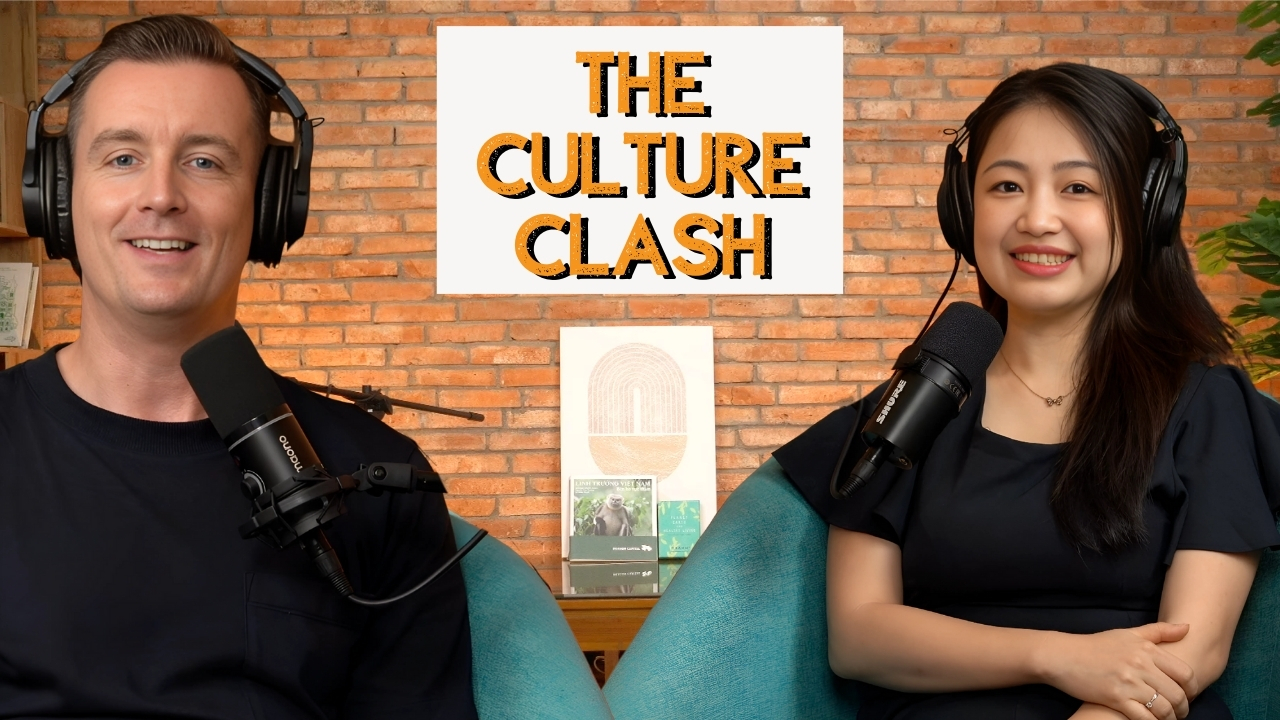This is Niall Mackay, The Podcast Guy. I am the host of this show and the founder of Seven Million Bikes Podcasts.
On my podcast, I often meet people whose stories inspire me in unexpected ways. One of those people was Mai Doan. She grew up in Vietnam, left at 17 to study abroad, and spent many years in the U.S. and France. Later, she made the bold choice to return home and now works in conservation.
Mai shared the challenges of adapting to life abroad, the stereotypes she had to fight against, and the shock of returning home to a culture that had changed while she was away.
Studying Abroad: A Dream and a Challenge
Mai left Vietnam when she was only 17. She went to Oregon as an exchange student, moving from the busy streets of Ho Chi Minh City to a small town in America. That was her first big cultural shock. Life moved more slowly, people were more private, and the streets were almost empty compared to what she was used to back home.
Even though she had studied English for years, she still struggled. In her first classes she felt lost. She understood only a little and often kept quiet, afraid of making mistakes. But slowly, she found her way through friendships. At her school, there was an “international table” where students from different countries sat together. That group became her support system. They understood what it was like to be far from home, and they helped her adapt.
These friendships also opened her world. She wasn’t only learning about America, but about many other countries too. It made her curious and inspired her to continue studying abroad later, including a time in France. Leaving home at such a young age was never easy, but it gave her a new view of the world and helped her build resilience that shaped the rest of her journey.
Confronting Stereotypes About Vietnam
When Mai first lived in the U.S., she noticed how people saw Vietnam. Most of them only thought about the war. To them, Vietnam was a country of bombs, jungles, and poverty. It hurt to see her home reduced to old images that no longer reflected reality.
Mai naturally became an unofficial ambassador. She told stories about her family, her city, and the modern life of Vietnam. Sometimes she wore the áo dài to school events, showing the beauty of her culture. She wanted people to see Vietnam as more than history—it was also about today, with young people chasing dreams, building businesses, and living modern lives.
She realized much of this gap came from generational memory. For many Americans, the war was still fresh, passed down by parents and grandparents. But for her generation, Vietnam was different. It was a country moving forward. By sharing her experiences, Mai helped change the way people around her thought about Vietnam.
More Inspiring Stories: Vietnamese Roots, German Beginnings – Embraces Your Identity with Trang Nguyen
Returning to Vietnam: A Difficult Choice
Many Vietnamese students who go abroad never return. They stay for better opportunities, for freedom, or simply because starting fresh feels easier than going back. So I asked Mai, “Why did you come back?”
Her answer was clear—family, responsibility, and a deep desire to give back to Vietnam. But coming home was not simple. She had been gone for years, and she felt like her language had frozen at the level of a 17-year-old. Everyday conversations were fine, but when people used formal Vietnamese, she struggled. It was a strange feeling—being home but not fully fluent in her own language anymore.
There was also reverse culture shock. In the West, she had grown used to making choices freely: what to study, where to live, how to live her life. In Vietnam, expectations were stronger, especially for women. Family and society still held traditional views about what she should do and how she should live.
Balancing Freedom, Tradition, and Gender Roles
When I asked Mai about the biggest difference she felt between Vietnam and the West, she said it was about freedom and choice. In America and France, she had more independence. In Vietnam, the culture was built around family and tradition.
In the West, families often lived in smaller, nuclear units—just parents and children. In Vietnam, many households were multigenerational. That meant more support, but also more expectations. For women, especially, the pressure to prioritize marriage and family over personal goals was strong.
Mai wanted both – to contribute to society and to respect her culture. She didn’t see it as a matter of choosing one or the other. Instead, she tried to balance both worlds. She carried the freedom she learned abroad, but she also embraced the traditions that shaped her.
Her goal was to become a bridge. Between East and West, between tradition and modern life, and between what women were expected to do and what they were truly capable of achieving.
Finding Purpose in Conservation
Before conservation, Mai had what many would call the “American dream.” She studied business, worked in corporate jobs in the U.S., and built a successful career. On paper, it looked perfect. But she told me something was missing. The work paid well, but it didn’t give her the sense of meaning she was looking for.
When she returned to Vietnam, she wanted to do something that mattered. That’s when she joined Conservation Vietnam as COO. It surprised me at first because she didn’t come from a science or environmental background. But that was exactly why she took the role—to use her business skills to support a cause she cared about.
Through this work, she discovered a side of Vietnam that even she didn’t know existed. Vietnam is the 14th most biodiverse country in the world, yet most people never hear about it. She saw animals she had never known lived in her country: the gray-shanked douc langur with its striking colors, pangolins with their strange armor-like scales, and the critically endangered Vietnamese pheasant, a bird so rare it was thought to be lost forever.
Conservation also connected back to Vietnam’s history. Unexploded bombs and the effects of Agent Orange still shape the land and the habitats where these animals live. Protecting wildlife in Vietnam isn’t just about saving animals—it’s about healing from the past.
Mai now looks to the future: reintroducing species into safe habitats and bringing global attention to Vietnam’s biodiversity through conservation summits. She found her purpose not in boardrooms, but in protecting the life and land of her own country.
The Bigger Picture: Vietnam at a Crossroads
As Mai shared her story, I couldn’t help but think about Vietnam itself. The country is changing so quickly. New malls, highways, and skyscrapers appear almost overnight. Development is everywhere, and people are chasing modern lives.
But with this growth comes risk. Forests are cut down, habitats shrink, and species are pushed closer to extinction. It’s a crossroads: will Vietnam become just another modern country that forgets its roots, or will it find a way to grow while also protecting what makes it unique?
Mai believes conservation is not only about animals. It’s about culture, heritage, and identity. If Vietnam loses its natural treasures, it loses a part of itself. Her mission is to make sure that doesn’t happen. She wants to remind people that development and preservation don’t have to be opposites—they can go hand in hand.
Listening to her, I realized she wasn’t just talking about conservation. She was talking about Vietnam’s future.
Conclusion
When I think back on my conversation with Mai, I see a story that is both personal and universal. It’s personal because it’s her journey—leaving home, facing challenges abroad, coming back, and finding meaning in conservation.
But it’s also universal because so many of us search for the same things: belonging, purpose, and a way to make a difference.
Vietnam is changing fast. But through voices like Mai’s, I believe there’s hope that progress can go hand in hand with preservation.
If you’re interested, simply follow A Vietnam Podcast for more stories!

